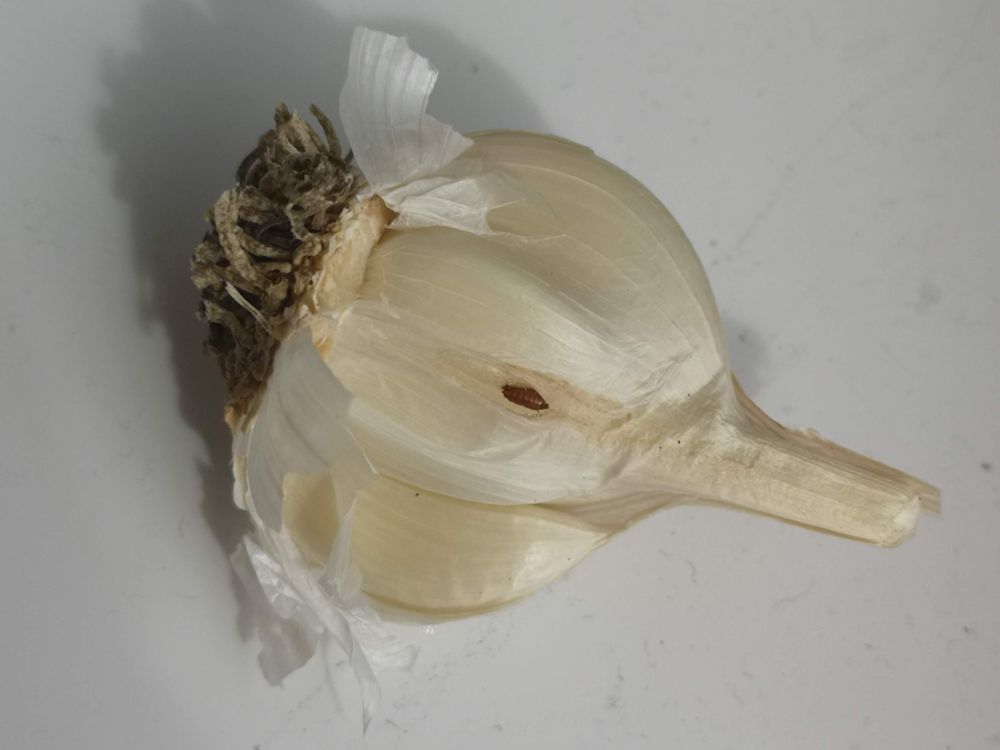Curly leaves on your onions? Don’t panic, find out everything you need to know about stopping the allium leaf miners in their tracks.
At risk of losing all our onions
Every year we grow onions in our allotment and they usually grow quite happily throughout the spring and summer, giving us a tasty and versatile vegetable that can be stored right through the winter. You can imagine our surprise therefore when, last year, we noticed that many of their leaves had started twisting and curling.
Our surprise quickly turned into fear when we discovered that some other allotment holders nearby had pulled up and destroyed all their onions. They warned us that the onions had been attacked by onion thrips, so we quickly pulled up a few of the affected, but then stopped. There was no way we were going to pull up all 300 of our precious onions without a fight!
Death by drowning
We didn’t want to use any chemicals on our plants so looked for natural methods of control. We read that nurseries don’t suffer from these pests because they use overhead sprinklers, so we decided to try ‘death by drowning’.
Using a spray gun set to the jet nozzle, we squirted water directly from above into the heart of each and every plant for about 20 seconds. We repeated this a few days later and closely monitored the onions over the coming weeks. To our joy, we found that the onion bulbs and new leaves continued to grow normally. We breathed a huge sigh of relief for having saved 95% of our onion crop.
Later in the season, we discovered that the culprits were not in fact onion thrips, but allium leaf miners. Over winter, we usually grow leeks and noticed that they had also been attacked during the autumn, but unfortunately we didn’t detect them until it was too late.

From October, we usually grow garlic but panic struck when Rachel noticed ‘brown seeds’ in the outer papery skin of our garlic cloves whilst she was dehydrating the garlic for storage. We later attributed the ‘brown seeds’ to being leaf miner pupae. The garlic was thankfully undamaged.

What are allium leaf miners?
The tiny 3mm long fly lays its eggs inside small punctures that it makes in the leaves. The eggs hatch into maggots which make their way down the plant, sucking out the sap as they grow. This causes the leaves to curl as the plant loses nutrients. The maggots then transform into brown pupae that actually look a lot like cumin seeds! Eventually, they will hatch into flies in the spring or autumn, as there are two generations each year. They will attack any plant in the allium family such as onions, leeks, garlic and chives.
Our allium crop this year
We are not growing any leeks this year but decided to grow our 300+ onions under insect mesh to keep out the allium leaf miner fly. We are also not growing any alliums in the same ground as last year. This is because the pupae can resurface from the soil in that area.

Eventually, the onions had outgrown the insect mesh, so we removed it. Our plan was to harvest the onions before the second wave of allium leaf miners.
By mid-June, however, we noticed that three or four onion plants were showing signs of an allium leaf miner attack, so like last year, fireman David took charge and drowned them with water a few times over the period of a fortnight. Within a month, the onions had recovered.


